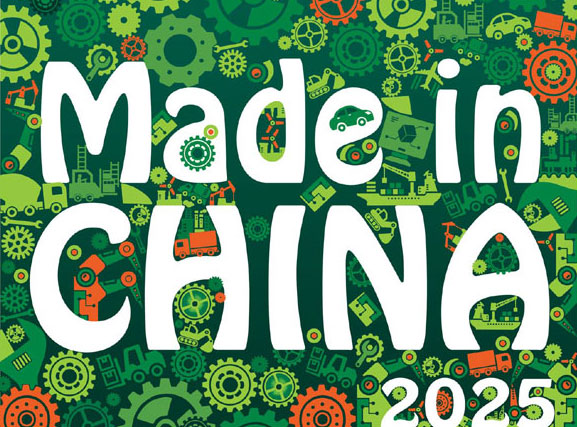Full Text: Historical Witness to Ethnic Equality, Unity and Development in Xinjiang
Updated: 2015-09-24 13:13
(Xinhua)
|
|||||||||||
VIII. Promoting the Unique Role of the Xinjiang Production and Construction Corps
Founded in October 1954, the Xinjiang Production and Construction Corps (XPCC) plays a key role in Xinjiang Uygur Autonomous Region. It assumes the responsibilities of reclaiming the wasteland and guarding the border areas commissioned by the state, and operates a unique administrative system that combines the functions of the Party, government, military and enterprise, with economic planning directly supervised by the state. It is an organization that handles its own administrative and judicial affairs within the reclamation areas under its jurisdiction in accordance with the laws and regulations and those enacted by the Xinjiang Uygur Autonomous Region. By the end of 2014, the XPCC had had under it 14 divisions comprised of 176 regiments, and was exercising jurisdiction over an area of 70,600 sq km boasting a total population of 2,732,900, accounting for 11.8 percent of Xinjiang's total.
Inspired by the XPCC spirit of "loving the motherland, selfless devotion, hard work, and forging ahead with pioneering endeavors," over the past six decades the XPCC workers have, generation after generation, made strenuous efforts to turn the desolate Gobi wilderness from time immemorial into ecological oases, initiate Xinjiang's cause of modernization, build one after another large farms and industrial and mining enterprises, and establish quite a number of new cities and towns. The XPCC has made an indelible contribution to the development of Xinjiang by promoting unity among all the ethnic groups, maintaining social stability and consolidating border defenses.
The XPCC has played an important driving role for the development and progress of Xinjiang. Starting with establishing farms by reclaiming wastelands, the XPCC expanded its activities to running mines, building factories and roads, developing commerce and trade, and initiating undertakings in science, education, culture and healthcare with funds for construction and life it had accumulated by way of working hard and practicing economy. Its regimental agricultural and stock raising farms and subordinating enterprises not only have provided for their own needs, but also have paid taxes to the local governments in accordance with the law, in addition to planning and building in succession quite a number of transport and hydropower projects as well as industrial and mining enterprises for the local governments, for free. To support Xinjiang' s industrial development, the XPCC has also transferred to the local governments, at no cost, a number of large-scale industrial, construction, transport, and commercial enterprises it had developed, making an important contribution to the modernization of the region. Since its founding, the XPCC has built eight county-level cities of Alar, Tiemenguan, Tumushuke, Kekedala, Shuanghe, Wujiaqu, Shihezi and Beitun, six administrative towns of Jinyinchuan, Caohu, Wutong, Caijiahu, Beiquan and Shihezi, and a large number of smaller towns on the regimental farms, facilitating the urbanization process in Xinjiang.
The XPCC has played an exemplar role in guiding the development of productive forces in Xinjiang. Fully exploiting its large-scale and group advantages in production organization, the Corps has built a modern agricultural system featuring mechanized, intensive and massive-scale production which is unique to China's inland arid areas, leading the nation in agricultural water-saving irrigation, promotion of mechanized farming, and the building of modern agriculture demonstration bases; it has become a key national production base for quality cotton and specialty fruit. In 2014, the total sown area of farm crops under its management reached 1,327,900 ha, accounting for 22.2 percent of the total in Xinjiang. The total output of cotton was 1.6 million tons, making up 36.3 percent of Xinjiang's production and 26.6 percent of the national total, leading the country for years in per-unit yield, rate of mechanization and per-capita output. It also tops the country in both output and scale of production of water-saving irrigation equipment, tomato products and cotton textile spindles. Ninety-one items of its farm produce have been acknowledged as famous brands or reputed trademarks of China and Xinjiang.
The XPCC has promoted ethnic unity in Xinjiang. In Xinjiang, the divisions, regimental farms, enterprises and public institutions under the XPCC are extensively scattered in the various prefectures, cities, counties of Xinjiang, closely interwoven with the local administrative divisions and extensively involved in various aspects of the autonomous region's economic and social development. The Corps has earnestly implemented the Party' s ethnic and religious policies, performing public service and offering practical help to the people of various ethnic groups. As early as 1959, it formulated the Twenty-Article Outline Concerning Support to the Army and Love for the People for Sincerely Serving the People of Various Ethnic Groups. In 1984, shortly after it was restored, the XPCC launched a co-construction mechanism between its grassroots-level units and local villages. During their interactions, the Corps' agricultural production units have kept imparting new technology and new crop species to local farmers, helping all local ethnic minorities to gain prosperity. The Corps' medical institutions have kept making medical-aid tours to the local villages and pasturing areas all year round, delivering medicines, treating the sick and preventing diseases. The Corps' performing art troupes also bring free shows to the local peoples.
The XPCC workers live in peace and harmony as neighbors with people of various ethnic groups in Xinjiang; they share mutual support and assistance. The Corps has provided various public services not only to its workers, but also to the local people, attracting people from all ethnic groups of Xinjiang and various other parts of the country to work, study, seek medical care, and start businesses in the XPCC, thus promoting ethnic unity, unity between the Corps and local governments, and integrative development of both XPCC and the local society, facilitating the formation of interwoven social development model for Xinjiang's ethnic groups and laying down the social foundation for these ethnic groups to communicate and integrate. During the process of creating the unique XPCC culture, the Corps makes a due contribution to enriching the local cultures of Xinjiang by promoting cultural exchanges among the different peoples and enhancing their identity with the Chinese culture that features integrated diversity.
The XPCC has played a unique role in maintaining stability and defending border area. Always upholding principles of being both soldiers and civilians, and combining productive labor with military duties and the army with the people, the Corps has paid equal attention to productive work and military training; the hundreds of thousands of XPCC workers from 58 border regimental farms have guarded a 2,000-km section of China's borderlines to ensure the security of China' s northwestern borders. In the face of severe and complex threats to social stability in Xinjiang, the various divisions, regiments, companies, enterprises and public institutions under the XPCC have established an emergency-response militia contingent. The XPCC has played a unique and irreplaceable role in maintaining social stability in Xinjiang, quashing violent terrorist activities and safeguarding the public.
It is the Chinese government's strategic plan to administer state affairs and ensure national stability and an important strategy to strengthen frontier governance to form, support and develop the XPCC; it is a major institutional innovation in maintaining stability in Xinjiang, safeguarding ethnic unity and national unification, and developing the border area; and it is an effective mechanism for the central government to support the localities, the more developed inland areas to support border areas, and the various ethnic groups to render mutual assistance. After decades of development, XPCC-built cities and regiment-built towns have gradually developed into the regional economic and cultural hubs, where all sorts of resources converge - population, capital, industry, talent, education and healthcare.
Upholding the national interests as its own interests and overall situation of Xinjiang its foremost concern, the XPCC has remained a key force in developing and building Xinjiang and bringing benefits to people of all its ethnic groups, as well as in safeguarding national unification and maintaining stability in Xinjiang. As such, it has always enjoyed support and help from the region's governments at all levels and the people of all the ethnic groups. In view of the new conditions and prioritizing the overall goal of lasting stability and peace in Xinjiang, the XPCC will give full play to its role in adjusting the social structure, promoting cultural exchange and facilitating inter-district coordination, further boost its strength, deepen XPCC-Xinjiang integrative development, and endeavor to make still greater contributions to the development, progress, harmony and stability of Xinjiang.
Today's Top News
Volkswagen CEO quits after carmaker rocked by diesel scandal
EU pushes through plan to relocate 120,000 refugees
Sino-US ties need more understanding: President Xi
World leaders to gather at annual UN meeting
Li: Blasts must bring harsh penalty
VW: 11 mln cars involved in scandal
UN observes International Day of Peace, calls for global truce
Tsipras returns to fight for Greek economy, debt relief
Hot Topics
Lunar probe , China growth forecasts, Emission rules get tougher, China seen through 'colored lens', International board,
Editor's Picks

|

|

|

|

|

|






